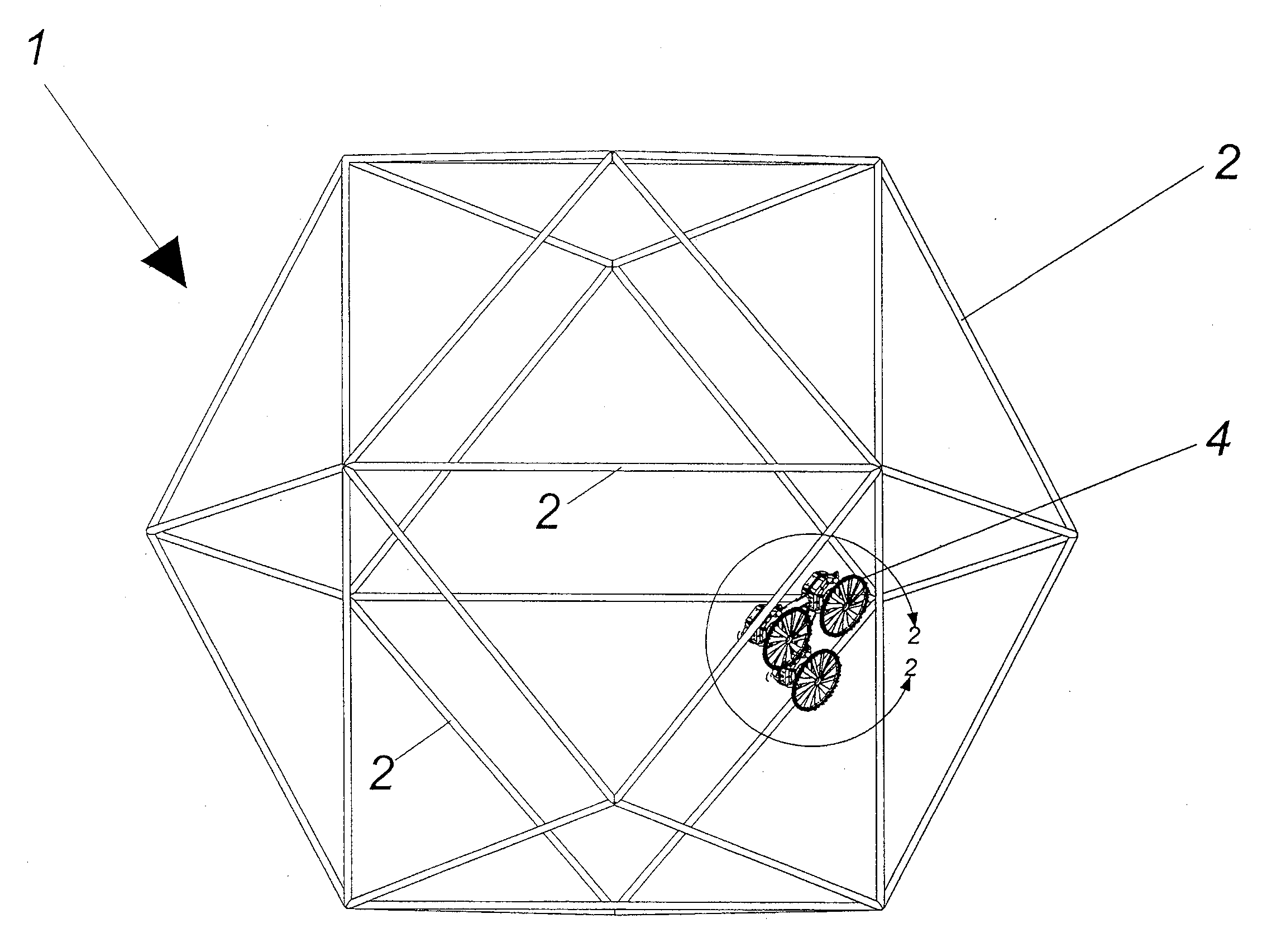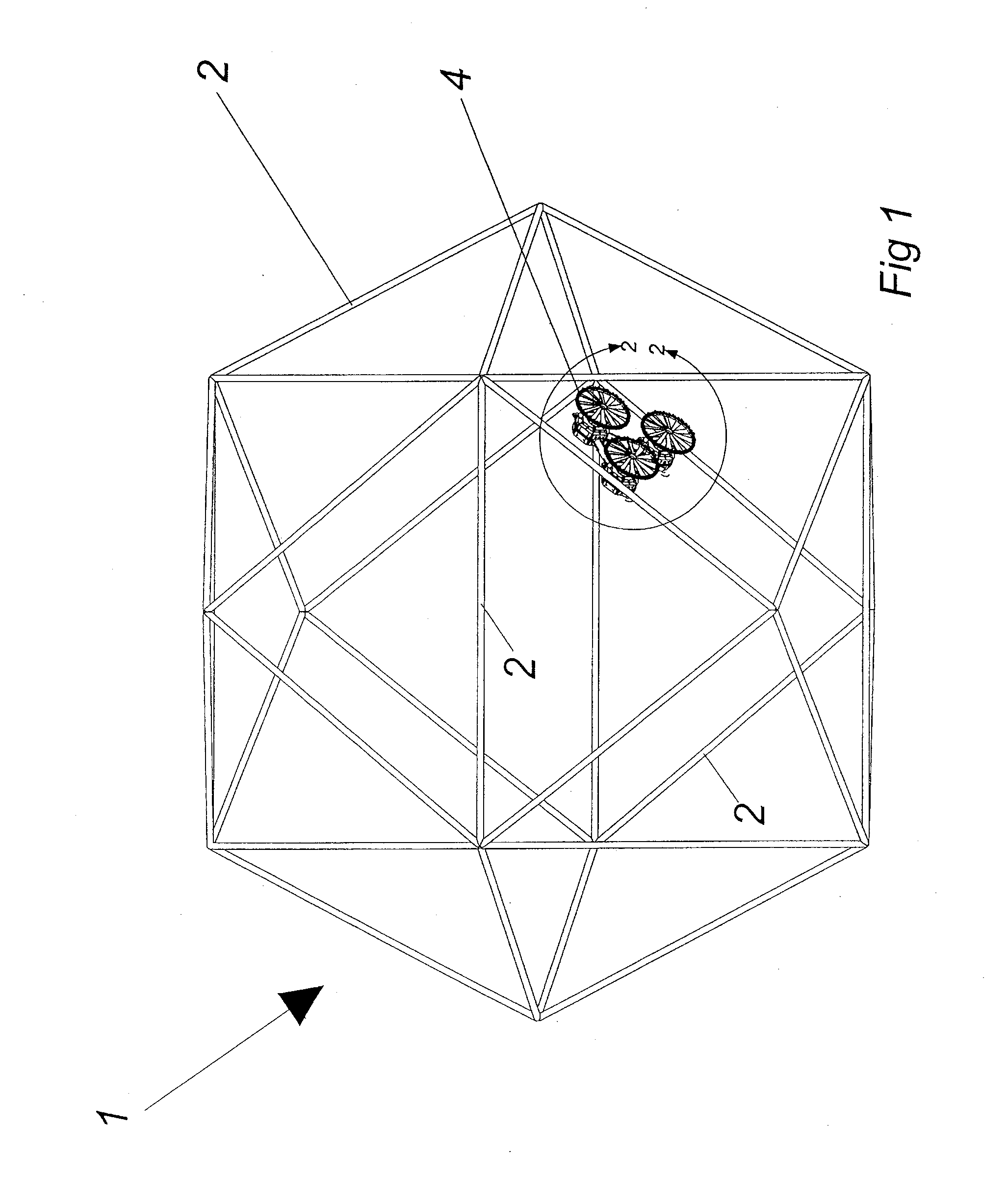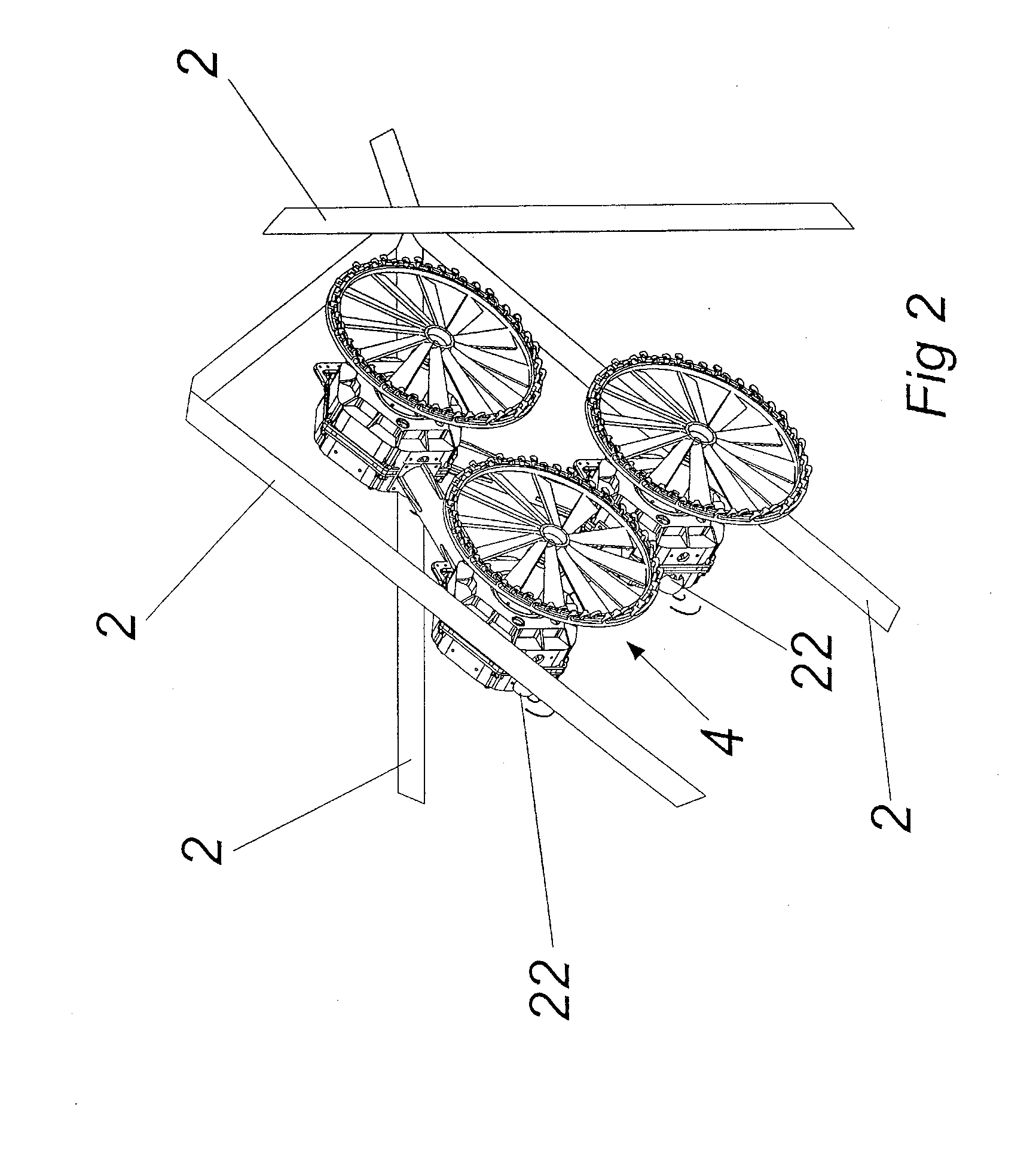Fish cage screen and cleaning apparatus
- Summary
- Abstract
- Description
- Claims
- Application Information
AI Technical Summary
Benefits of technology
Problems solved by technology
Method used
Image
Examples
Embodiment Construction
[0050]Aquaculture cages will experience two types of growth, which for reference will be called soft and hard. Soft growth is bacteria, fungus, algae, diatoms and grass. Hard growths are barnacles, oysters, mussels, clams, etc. Hard growths can be inhibited with a combination of surface finish and flexibility that affect their ability to attach to the cage. Controlling hard growth with screen extruded or molded plastics can be accomplished by keeping the flex modulus low enough to allow some flexing during use. The hard growths attachment gets stressed because the shell will not flex as screen flexing occurs and they cannot maintain attachment and fall off the screen. Flex modulus of plastics of 500 ksi and lower in diameters of 3.5 mm and smaller have been found effective to release hard growths of barnacles, clams, oysters and tube worms. Tensile strength of 8,000 psi have been found suitable with a surface durometer of D 75 or higher have been found effective against predators.
[0...
PUM
 Login to View More
Login to View More Abstract
Description
Claims
Application Information
 Login to View More
Login to View More - R&D
- Intellectual Property
- Life Sciences
- Materials
- Tech Scout
- Unparalleled Data Quality
- Higher Quality Content
- 60% Fewer Hallucinations
Browse by: Latest US Patents, China's latest patents, Technical Efficacy Thesaurus, Application Domain, Technology Topic, Popular Technical Reports.
© 2025 PatSnap. All rights reserved.Legal|Privacy policy|Modern Slavery Act Transparency Statement|Sitemap|About US| Contact US: help@patsnap.com



